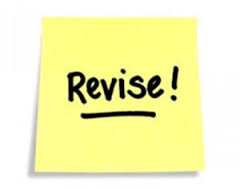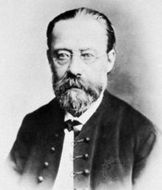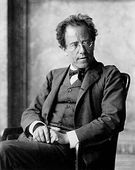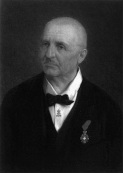The Renaissance Period
|
The Renaissance was a cultural movement that profoundly affected European intellectual life in the early modern period. Beginning in Italy, and spreading to the rest of Europe by the 16th century, its influence was felt in literature, philosophy, art, music, politics, sci ence, religion, and other aspects of intellectual inquiry. Renaissance scholars employed the humanist
method in study, and searched for realism and human emotion in art. Renaissance as a literal translation means 'rebirth'. |
Anthem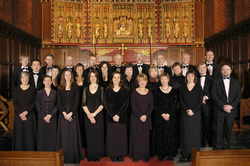
A short sacred choral piece sung in English. Sometimes sung by a choir unaccompanied (A cappella) and sometimes accompanied by organ and featuring solo parts. The anthem is the Protestant equivalent of the Motet. Listen to this recording of the Thomas Tallis - Verily, verily I say unto you.
|
Mode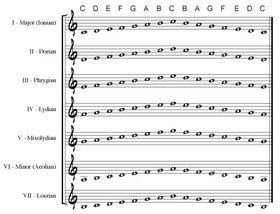
Modes are early versions of scales. With the exception of the Ionian mode (which is the commonly known "major scale") each of these modes will sound "unusual" to the western ear, they are built up on a series of augmented and diminshed intervals which are not so commonplace in western music. Listen to this work written by the English composer Vaughan Williams, Fantasia on a Theme by Thomas Tallis. Watch this recording to get a feel for the modal tonality used by Vaughan Williams in this iconic piece for string orchestra. Follow the score here
|
Consort
A consort is a small group of instruments, usually from the same family. It is regarded as chamber music. Watch this graphic depiction of a consort of viols playing. note the contrapuntal texture with constant use of imitation. The excerpt concludes with a tierce de picardie.
|
Chorale Prelude
An extended composition for organ based on a chorale melody. The melody can be treated in a variety of ways, eg fugal style and variation form. See Chorale, Fugue and Variation.
|
Pavane & Galliard
Two renaissance dances that are usually linked. The Pavane is slow and stately in duple time whilst the Galliard is in contrasting triple time and lively. Watch this video of the dance being performed in period costume and with authentic instruments (tambour, viol, lute and recorder)
|
The Baroque Period
Baroque music takes its name from a very florid and decorated style of architecture and art of the 17th century. In music the term is used to describe the period from around 1610 to 1750 in which new styles of composition began to appear:
Fugue
|
Subject |
Counter Subject |
Episode |
Stretto |
|
|
A helpful video to explain the Fugue
|
The Classical Period
Classical OperaWe will be looking at 2 of Mozart's most famous operas, Don Giovanni and The Magic Flute. Find out some information (orchestration, plot/libretto) about the work and post it to me from the staff page. Listen to the overture from both Don Giovanni and The Magic Flute and tell me what concepts you can identify in both - I got 55 concepts in the Magic Flute alone! Magic Flute score and Don Giovanni score
Chamber Music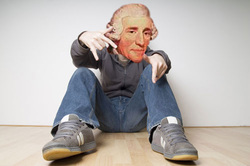
Chamber Music in the Classical period became very popular. The string quartet became one of the most popular groups for composers to write for. Haydn wrote 68 quartets in total and became known colloquially as the "Father of the quartet" Listen to this recording of the Emperor Quartet it is in theme and variation form, you can follow the score from here (it starts on page 12 of the score!) Oh, by the way, you might know it better as something else!!
|
The Scherzo was the playful sibling of the Minuet and Trio, listen to this very fast scherzo from Beethoven's 7th Symphony. Click here to download the score from IMSLP and follow it as you listen!
The 2nd movt of the symphony can be listened to here and you can click here to see the score. Try to follow it through at home. See how Beethoven uses the same ostinato throughout!! |
The Classical Concerto
The concerto saw huge developments in the classical period. Haydn exploited the now virtuosic possibilities of the trumpet in his concerto, in this recording of the first movement you can hear one of the finest trumpeters in world - Wynton Marsalis. The development of the valve trumpet allowed for the first time, the full chromatic range of notes to be achieved - Haydn shows this off to full advantage with the many chromatic passages within the concerto. Read the score and follow the solo trumpet part to see for yourself! Listen out for Marsalis at his best in the cadenza at the end - the best example I can find of someone just plain showing off! Click on the picture of Wynton to see him perform on YouTube (in Edinburgh at the Usher Hall with the BBC Scottish Symphony Orchestra).
|
The Romantic Period
The Romantic Period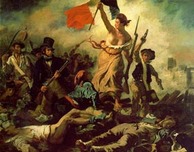
Romanticism is a term applied to music from around 1810 to 1900 and is borrowed from a movement from the end of the18th century which was used to describe the beginnings of new ideas in literature and art. While in the Classical period there was a fairly even emphasis on the form and expressiveness in music, Romantic composers created greater freedom of form and design in their music.
Romantic composers had a wide interest in all forms of art and befriended artists, writers, poets and other composers. These friendships often provided the inspiration for the composition of new music as the composers experimented with sound to create the feelings of: emotions, the story of poems, the description of the countryside, fantasies and dreams, love, war, rivers and lakes, and in fact any idea that inspired the composer. Don't get confused with sloppy sentimental music such as "My Heart Will Go On" Jean Sibelius
Sibelius was from Finland, one of his most famous works was a tone poem entitled Finlandia. Listen to it from this link. Follow the score from this link. This piece, written in 1899, is taken up with rousing and turbulent music, evoking the national struggle of the Finnish people. Watch the Finnish Radio Symphony Orchestra perform it here.
Mikhail Glinka
Mikhail Ivanovich Glinka (Russian: Михаи́л Ива́нович Гли́нка 1804 –1857), was the first Russian composer to gain wide recognition within
his own country, and is often regarded as the father of Russian classical music. Glinka relies heavily on the use of folk melody which becomes thoroughly infused into the musical argument. Here is the overture from the Opera Ruslan and Ludmilla. You can read the score from here as you listen to the recording here. Watch Valery Gergiev conduct the Mariinsky Theatre Orchestra of St Petersburg holding 2 dozen roses at the same time, impressive! |
Nationalism
A term used to describe music which incorporates elements of folk music of the composer’s country. It emerged about the second half of the 19th century and was a type of Romanticism. Composers include Grieg, Glinka, Smetana and Sibelius.
|
Late RomanticLate romantic composers were, in the main, concerned with scale - in orchestral forces - dynamics (pppp-ffff), length of composition etc, this allowed them to be even more expressive in their output. A time of great development in instrument technology, new instruments are added to the orchestra - even voice becomes commonplace in many symphonic compositions!
|
Impressionism
Musical impressionism focuses on a suggestion and an atmosphere rather than on a strong emotion or the depiction of a story. As in the art of the period - definition and clarity were second place to colour and expression - composers experimented with different timbres through instrumentation and orchestral scoring to achieve this.
|
20th Century
Stravinsky, Prokofiev, Shostakovich, Vaughan Williams and the wonders of popular music - not to mention X-Factor! (no, I mean I don't want you to mention the X- word!)
|
|
Have you got rhythm??Listen to this phenomenal performance of I Got Rhythm written by George Gershwin. Hiromi Uehara gives an inspiring and incandescent performance at Jazz San Javier Festival in Spain.
|
Musique ConcrèteThis style originated in Paris after WW2 (hence the French name) with Pierre Henri and Pierre Schaeffer.
Musique Concrète is electronic music that uses recordings of 'actual sounds', such as trains, weather, footsteps etc. These are edited, arranged and modified to form abstract soundscapes. Listen to Stockhausen's Etude from 1952 and consider how new these sounds would have been for a 'classical audience'. |
Howard Goodall - great revision viewing!


